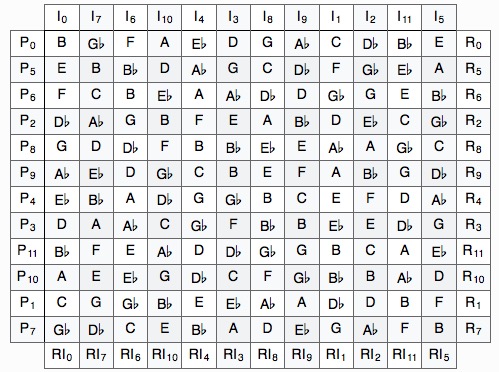Search the Community
Showing results for tags 'atonality'.
-
Hi Sometimes I also write very very short pieces just to try new sound comination, serial rows, etc... I like the word oxymoron and its meaning: made up of two or more words that seem to be opposite to each other, or actually are opposite. For example, the words "Wise fool", "Warm freezer", "Legal murder" In English the plural is oxymora (as other Greek words). But in Spanish the plural is not clear: oxímorones, oxímorons, ?? Well, these are serial mini pieces: I keep them as ideas for other things, or who knows, to make a set by themselves.
-
This piece is in the Rondó Form. There is a main subject (tema principal) and three subordinate themes. So the structure is ABACADA, the A part has always been modified. I have used the "classical" atonal system described by Schönberg and "friends". The dodecaphonic matrix is this: Several series are combined to achieve the variation and to create tension and rest (they are not randomly combined, as many people think about atonality). The series are notated in the score. Rondó.pdf Rondó.mp3
-
Usually, I don't write orchestral pieces. I think I'm not ready, yet. However, I feel comfortable with atonality, with "classic" atonality, the way it was described by Schönberg and friends. I take atonality as a tool, one more tool, to compose. I mean, I'm not afraid (I like it) of mixing languages. This is just an attempt. Classic atonality uses small orchestral ensembles, this is easier to manage (for me). The piece ends suddenly. I wanted to be so.



